Posted by Elena del Valle on June 29, 2017

Monetizing Your Data
Photos: Andrew Roman Wells, Kathy Williams Chiang
The more advanced our technology becomes the more data managers can gather and store. But once they have it what can they do with it? What should they do to gain an advantage for their business and how should they do it? Managers wondering what to do with all the data their company gathers on customers and prospective customers may be interested in a new book that addresses many data use related questions, Monetizing Your Data: A Guide to Turning Data into Profit-Driving Strategies and Solutions (Wiley, $49.95) by analytics specialists Andrew Roman Wells and Kathy Williams Chiang.
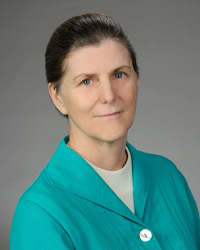
Kathy Chiang, author, Monetizing Your Data
“The target audience for the book primarily includes entry-level to mid-level managers in medium to large sized businesses working in the areas of business analysis, marketing analytics, data science, business intelligence, strategy and business planning,” the authors replied by email via their publishing company when asked about potential readers.
The 344-page hardcover book published March of this year was written in an academic style with tables and charts. It is divided into six main sections titled as follows: Introduction, Decision Analysis, Monetization Strategy, Agile Analysis, Enablement, and Case Study. The authors promise a step-by-step process, Decision Architecture Methodology, to monetize data assets. The authors begin with an explanation of the analytical cycle, striving to guide readers through the process of developing practical strategies. They offer templates, checklists, and examples in a companion website, monetizingyourdata.com.
The biggest challenge to writing and publishing their book, which required 18 months from idea to publication, was that, “Because we are both active practitioners in the field, finding quality time to write and collaborate was a big challenge.” They declined to answer a question about the legal and ethical issues related to monetizing data.
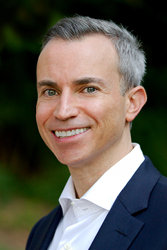
Andrew Wells, author, Monetizing Your Data
“Data is the transactional record of the activity of the business,” the authors replied when asked for a definition of data as it relates to their book. “It captures both internal business activity, such as production of products and services, and external activity such as customer orders, reviews, complaints. It can come in many different forms such as a number, a date, a word, a paragraph, a recorded message, or even an entire document.”
When asked if the data they refer to in the book is different from Big Data, they said, “Big Data at this time does not have a consensus definition but the term is generally used to refer to unstructured data such as social media posts and/or highly granular transactional data of the business characterized by large volume, high velocity and broad variety. The data we speak of in the book covers all types of business data from large to small, such as traditional business reporting metrics such as may be found in financial reporting, customer survey data found in market research, and the large volumes of transactional data that can be thought of as Big Data.”
According to his biography, Wells, chief executive officer, Aspirent, a management-consulting firm focused on analytics, has extensive experience building Analytical Solutions. He also has experience as a hands-on consultant. In Silicon Valley, he worked on customer analytics and the use of predictive methods to drive performance for two start-ups. Wells has also held executive roles as director of Business Intelligence at Capital One and consulted for Coca-Cola, IHG, The Home Depot, Capital One, Wells Fargo, HP, Time Warner, Merrill Lynch, and Applied Materials.
Chiang has expertise in guided analytics, analytic data mart development and business planning. Prior to her current position as vice president, Business Insights, Wunderman Data Management, she consulted with Aspirent on numerous analytic projects for several multinational clients including IHG and Coca-Cola. She has worked for Telecommunications Systems of Trinidad and Tobago, Acuity Brands Lighting, BellSouth International and Portman Overseas.

Click to buy Monetizing Your Data
Comments:
Filed Under: Books
Posted by Elena del Valle on May 18, 2017

The Whole Foods Diet
Photos: Whole Foods Market, Grand Central Life & Style
John Mackey, co-founder and chief executive officer, Whole Foods Market joined forces with Alona Pulde, M.D. and Matthew Lederman, M.D., the latter two known for their Forks Over Knives film and books, to publish The Whole Foods Diet The Lifesaving Plan for Health and Longevity (Grand Central Life & Style, $28). The 336-page hardcover book, published this year, features the Whole Foods Market logo on the cover next to Mackey’s name.

Alona Pulde, MD and Matthew Lederman, MD, co-authors, The Whole Foods Diet
The book is divided into three parts and 15 chapters. Following an introduction by Mackey the authors speak mostly (a final chapter also is in Mackey’s voice) with a single voice, starting with an introductory section on diet and health. A second section outlines their ideas about food and their food group preferences. The remaining two chapters are dedicated to a 28-day meal plan. According to a representative from their publisher, the authors were too busy to respond to questions by email.
Although all three are vegan, they believe a diet consisting of 90 percent vegetables is healthy. Their approach to health begins with eight main food groups: Whole grains and starchy vegetables, beans and legumes, berries, other fruit, cruciferous vegetables, leafy greens, nonstarchy vegetables, and nuts and seeds. The authors dedicate an entire chapter to the groups and their beliefs about each. They dedicate another entire chapter to the ethics of being vegan.

John Mackey, co-author, The Whole Foods Diet
Mackey is co-author of Conscious Capitalism. Pulde is a board-certified practitioner of acupuncture and Oriental and family medicine. Lederman is a board-certified internal medicine physician. Pulde and Lederman were featured in Forks Over Knives and co-authored the New York Times bestseller The Forks Over Knives Plan.

Click to buy The Whole Foods Diet
Comments:
Filed Under: Books
Posted by Elena del Valle on May 11, 2017

American Surveillance
Photo: The University of Wisconsin Press
In American Surveillance Intelligence, Privacy, and the Fourth Amendment (University of Wisconsin Press, $44.95) Anthony Gregory explores the competitive interests of the United States government’s desire for unfettered access to information about its citizens and their right to privacy from undue intrusion. He begins by examining the country’s history in that regard all the way to our Founding Fathers. In this era of increasingly effective technological tools and broadening laws that facilitate a growing number of personal data breaches he concludes that the book asks more questions than it answers.
When asked what inspired him to write the book the author replied by email, “For over a decade I researched civil liberties issues for the Independent Institute, and so this book fit into that larger project. I’d been intrigued by surveillance issues since the war on terror began. Even before that I considered foreign relations and such domestic policies as the drug war to have an affinity in consequences invited more exploration.”
The hardcover 263-page book was published in 2016 in collaboration with the Independent Institute. It is written in an academic style divided into an Introduction, a Conclusion, an Epilogue and nine chapters: Reconnoitering the Frontier, 1775-1899; Foreign Influences, 1900-1945; Espionage and Subversion, 1946-1978; Calm Before the Storm, 1979-2000; The Total Information Idea, 2001-2015; Unreasonable Searches; Fourth Amendment Mirage; Enforcement Problems; and The Privacy Question. It also includes copious end notes and references.
“The main goal was to look at the intersecting issues of security intelligence and privacy rights with fresh eyes,” he said. “These are big questions with correspondingly huge literatures, and I wanted to deliver a contribution that made sense of it all, both providing a balanced analytical approach to multiple complex topics and revealing the more radical implications of what many self-described moderates on both sides of policy controversies advocate.
“I hoped it would reach both scholarly specialists and generalists as well as lay audiences concerned about policy,” he said when asked who was the target audience for the book. “It serves to curate a lot of different literatures and so can be a starting point for many different types of readers. Those in policy seeking simple answers might not find them here, but they will find some material that I hope will enhance their understanding.” In response to questions about the greatest challenge the book posed, he said: “I suppose the biggest challenge was maintaining analytical balance, and satisfying peer reviewers with different perspectives while maintaining an editorially sufficient thesis. I was surprised by many little factual discoveries on the way. I was most pleasantly surprised that some of the scholars on privacy and intelligence I had most admired found the work worthwhile!”
When asked if he found that the violation of privacy rights of Americans was justified by the safety concerns, he replied: “I try to keep some distance between my academic writing and my ideological commitments, but it’s not always possible. I think privacy advocates understate how strong the consequentialist case can be against their cause. But my view on the rightness or wrongness government surveillance is not primarily rooted in consequentialism. That’s why I think it’s more of a cultural question—not even a matter of legal rights—when we talk about privacy and surveillance. And once you know where you stand on that, you have to see what kinds of other government powers correspond to the degree of privacy you want. That often kicks the question to foreign policy or law enforcement, where sometimes measures taken do not even achieve the stated goals on their own terms. So this is a rather big question.”
Gregory is the author of The Power of Habeas Corpus in America: From the King’s Prerogative to the War on Terror, winner of the PROSE Book Award for legal studies. He is a fellow of the Independent Institute in Oakland, California.

Click to buy American Surveillance
Comments:
Filed Under: Books
Posted by Elena del Valle on April 27, 2017
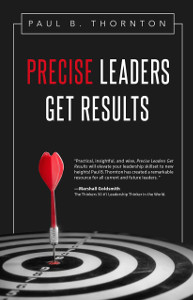
Precise Leaders Get Results
Photos: Paul B. Thornton
In Precise Leaders Get Results! (Motivational Press, $19.95) Paul B. Thornton, professor of business administration at Springfield Technical Community College, discusses his leadership ideas. His new book was written for “parents, teachers, coaches, team leaders, project managers, managers, and leaders at all levels in every type of organization.”
He begins by distinguishing between managers and leaders. Managers, he says, see themselves as preservers of the status quo. They work to achieve organizational goals whereas leaders, who by definition seek growth and improvement, promote changes to improve the status quo at all levels. There are many kinds of change and varying approaches to leadership, but what all leaders share is the desire to make a difference. Why do these issues matter? Because in the past managing employees was enough, he says, but today’s companies require managers to also be leaders.
When asked how the book came about Thornton replied by email via his publicist, “One of the courses I teach at Springfield Technical Community College is principles of leadership. For the past three years, I have used a workbook that contained many of the concepts in my published book, Precise Leaders Get Results. After each semester, I would add new material, reorganize parts, and teak the content in my workbook. I like to think that after each set of changes, the material became more focused and better organized. Overtime this workbook became my manuscript. So the short answer is it took me about three years to go from idea to publication.”
The 190-page softcover book was published in 2016 and is divided into 22 brief and easy to read chapters. Each chapter concludes with a short summary and discussion points.
“’Get results’ means that as a leader you successfully influence people to make positive changes,” the author said when asked about the book title. “Results—the right changes actually happen. The changes improve the situation.”

Paul B. Thornton, author, Precise Leaders Get Results
In response to a question about why he decided to write a book about leadership he replied, “Countless change efforts are underway at this very moment all over the world. Despite good intentions, many of these efforts will fail. Various reports and studies have found that 60 to 70 percent of the change initiatives don’t produce the desired results? Why? I find some leaders never get precise in answering three basic questions: Who needs to change (target and secondary groups)? What specific changes are required? Are people able and motived to make the required changes? What resources are needed?
Who will lead the implementation? I’m inspired to help leaders get precise in answering these questions so they will achieve the results they desire.”
Thornton, who has authored 15 books on management and leadership, is also a trainer and speaker. He has conducted management and leadership programs for Palmer Foundry, UMass Medical School, Mercy Health Systems, Kuwait Oil Corp., Human Services Forum, Sunshine Village and United Technologies Corp. According to his biography, through his coaching, seminars and courses, he has helped more than 10,000 people become more effective managers and leaders.

Click to buy Precise Leaders Get Results
Comments:
Filed Under: Books
Posted by Elena del Valle on April 20, 2017
 The Power of Breaking Fear
The Power of Breaking Fear
Photos: StarGroup International
Hoping to share his ideas with young professionals, entrepreneurs, and “anyone who is willing to take action to better their life” Tim S. Marshall, a public speaker and entrepreneur, authored The Power of Breaking Fear, his first book (StarGroup International, $29.95). The 212-page softcover revised edition of the book was published this year.
“I wanted to share my belief that anything is possible if you start with awareness and approach fear as a motivation, not an obstacle,” Marshall said by email via his publishing company when asked why he wrote his first book.
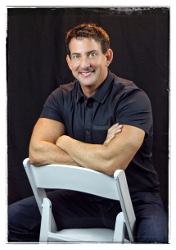
Tim S. Marshall, author The Power of Breaking Fear
The book is written in first person, easy-to-read personal style with thoughts extracted and printed on the page margins in italics. The author emphasizes his experiences and draws conclusions and recommendations from them. For example, he believes that awareness and having an open mind are essential to overcoming fear, and lead to internal and external wealth. He also says that most people are intimidated from pursuing our goals for fear that we are not good enough to succeed.
“There are varying degrees of fear based on individual circumstances and past trauma, so the obstacles may be more significant for some,” he said, when asked if everyone can overcome fear and to what degree. “However, I believe that virtually everyone has the potential to act and overcome. It’s not about disengaging the fear that prevents you from doing things that would harm you. It’s about embracing the fear that holds you back from positive things that you desire and deserve. It’s about becoming aware of those fears that stand between you and your potential and then pushing through the self-doubt and discomfort with intention.
When asked how long it took to publish the book he replied, “I took notes for 25 years. After my divorce, I wrote incessantly for a year and isolated myself in order to express these 25 years of notes, thoughts, and ideas that I gained from interacting and coaching thousands of customers and individuals.”
The author plans 20 Marshall Principles titles in total, including three before this summer. They are Entrepreneurship – Cracking the Code, Young Professionals – Frustration to Freedom, and Sales – Selling Yourself to Sell Anything. Marshall is the founder and former owner of Copysource. He has taught Fortune 500 executives at Citrix, Konica Minolta, and Toshiba.

Click to buy The Power of Breaking Fear
Comments:
Filed Under: Books
Posted by Elena del Valle on March 16, 2017

AgeProof
Photo: Jean Chatzky courtesy of Ari Michaelson
In the last three decades, people are living longer in the United States. And the number of Americans 100 or older has increased 2,200 percent since 1950. At the same time, 84 percent of all healthcare spending is related to chronic diseases. But only 10 percent of people think about financial longevity. So say Jean Chatzky, Michael F. Roizen, MD with Ted Spiker, authors of AgeProof Living Longer Without Running Out of Money or Breaking a Hip (Grand Central Life & Style, $28) published last month. In the book, they share their opinions about physical and financial health and promise readers that “…if you take the steps we outline here, you’ll reduce your risk of developing chronic conditions, save more of those out-of-pocket and horrendous hospitalization costs, and live longer with fewer disabilities.”

Jean Chatzky,co-author, AgeProof
Chatzky and Roizen advocate regular physical and fiscal check-ups. For physicals they recommend self-tests and healthcare tests, including bone mineral density, prostate, mammogram, colonoscopy, mental health, rectal, eye, dental and other exams. On the fiscal side, they suggest reader assessments of income level, expenses, net worth, emergency savings, retirement, credit score, personal circumstances and changes. They point to economist Daniel Kahneman’s research as indicative that the benchmark income should be derived from the line between happiness and unhappiness, $75,000. The estimates outlined in the fiscal physical chapter are for people earning between $50,000 and $300,000.
In the Introduction, the authors offer to teach readers how to “make your money and good health last decades longer.” They were too busy to respond to questions by email, according to a spokesperson for their publishing company. A press release about the book, points to the authors’ belief in a crucial connection between health and wealth, and that the same principles that apply to a better body apply to an improved investment portfolio.
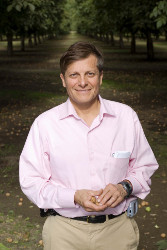
Michael F. Roizen, M.D.,co-author, Age-Proof
The 328-page hardcover book is divided into eight parts: System Checks, Breaking Bad Behavior, Pressure Situations, Team Works, Survival Instinct, Go Time, Making a Living, and Domestic Engineering, and 16 chapters. The chapters are written in an easy to read style with sidebar quotes from the authors.
Chatzky, a financial journalist, author and motivational speaker, is a financial expert on the Today Show. Roizen, a board-certified anesthesiologist and internist, served as chief wellness officer at the Cleveland Clinic. He received the Paul. G. Rogers Best Medical Communicator award from the National Library of Medicine. Spiker, professor and chair, Department of Journalism at the University of Florida, is co-author of 20 books.

Click to buy AgeProof
Comments:
Filed Under: Books
Posted by Elena del Valle on March 9, 2017
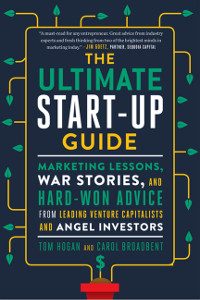
The Ultimate Start-Up Guide
Photos: Ty Nowicki, Robin Bulanti
Silicon Valley marketers Tom Hogan and Carol Broadbent, founders, Crowded Ocean, recently released The Ultimate Start-Up Guide: Marketing Lessons, War Stories, And Hard-Won Advice From Leading Venture Capitalists And Angel Investors (Career Press, $16.99), a how-to book to help start-up companies succeed published this year. What do they know about start-ups and failure? During their initial year they made zero money. Ninety percent of new companies, they point out, fail within two years.
They explained by email that they wrote the book, their first, for “Anyone who is thinking of starting their own company—tech or otherwise; anyone thinking of getting involved in a startup; or anyone who wants to better understand how startups (and Silicon Valley) work.”
From concept to final galleys it took them one year to complete the book project. The 223-page softcover book, written in an easy to read candid style, is divided into 24 chapters. In the chapters, there are graphs to illustrate information or outline data and easy to see quotes from business people in gray boxes. At the end of each chapter there is a suggested reading list
The authors set out to incorporate lessons from dozens clients as well as venture capitalists and angel investors, to help entrepreneurs avoid the pitfalls that cause most start-ups to fold. They address strategies for hiring and building a team, culture, and values; how to pitch the company, secure funding, and distribute equity; best practices in launching a business and sustaining market momentum; and how they believe venture capitalist investors think, evaluate new companies, and advise entrepreneurs. Although in the first chapter they outline their firm belief in the importance of a sales driven marketing strategy, they also value public relations, Broadbent explained by email.
“As we tell our startup clients, PR is probably the highest ROI marketing investment you can make and a great source of lead generation,” she said. “That’s because editorial coverage of your company, product or service is perceived by would-be buyers as objective validation. In other words, favorable coverage of your startup in the places where your prospects go (trade press, social media, blogs, Twitter, Pinterest, you name it) will go a long way to shaping the perception of your brand, motivate buyers to find you and hopefully to become your customer. That’s why for 100 percent of our startup clients, we have made PR an ingredient in their marketing program mix.”

Carol Broadbent and Tom Hogan, authors, The Ultimate Start-Up Guide
“A startup can be an idea seeking traction (from early funders), an early-stage company (friends and founders money) or a company that has received its first round of funding,” they said. “Another way to define it is: any company that has yet to find its rhythm in the market (no matter its age).”
When asked about the greatest challenge the book presented they replied, “The challenge, as you’d guess, given our workload (3 clients at a time and it’s just the two of us) and the pace of Silicon Valley, was finding the time to write the book. And to get the participation of past clients and VCs who are as busy as us. The reward has been in the early reviews, not just from strangers who have read the book and commented on it but from clients (and possible new clients) who contact us and tell us how much they learned in reading the book. (Note: it’s not that we’ve discovered something new or unique—it’s that we package and present it in practical ways that they can use in their daily operations.”
Prior to founding Crowded Ocean, Broadbent was vice president of corporate marketing at Bay Networks, senior vice president of corporate marketing at Aspect Communications, and director of marketing at Sun Microsystems. In addition, she led marketing at two Kleiner Perkins-funded startups: vice president of marketing at Asera, and director of market development at Go Corporation.
Hogan has more than 25 years of marketing experience, including roles as vice president of marketing at Oracle, Borland, Lucent, and VitalSigns Software. As Oracle’s original creative director, he managed the global advertising, direct marketing, seminar and trade show, and creative departments.

Click to buy The Ultimate Start-Up Guide
Comments:
Filed Under: Books
Posted by Elena del Valle on February 2, 2017
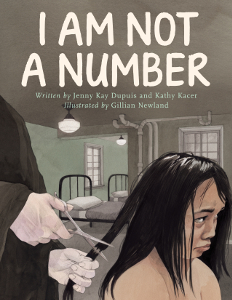
I Am Not a Number
Photos: Second Story Press
Jenny Kay Dupuis, Ed.D.’s interest in her family’s past and her commitment to teaching about Indigenous issues through literature drew her to co-write her first children’s book. It took her and Kathy Kacer three years to write I Am Not a Number (Second Story Press, $18.95), the true and personal story of Irene Couchie Dupuis, her grandmother, who was taken from her Nipissing First Nation’s family and community at a young age to live in a residential school in the late 1920s in Canada. They wrote the easy to read lovingly illustrated book for school-age children (ages seven and up) to learn about the legacy of the Indian Residential School System (known as boarding schools in the United States). According to the author, it has also appealed to “educators (Grades 2-12), librarians, families, and community organizations interested in reading stories about true history, and supporting children and youth to develop critical literacy skills to engage in important, meaningful discussions about the injustices that have and are currently occurring to Indigenous peoples.” In it, they share her grandmother’s story, including the hardships and verbal and corporal punishment she and other children endured at the hands of the nuns and within the system.
“When I was growing up, we didn’t talk much about the history and injustices in school programming,” Dupuis said by email when asked about the Nipissing First Nation. “I learned about my culture and community values, like having respect for myself and others, while working a part-time job (as a youth) at a local restaurant called the Teepee Café owned by Dot Beaucage-Kennedy. It was a place where everyone gathered, including storytellers, Elders/knowledge keepers, grandmothers/grandfathers, artists (traditional/contemporary), language speakers, and families. Times have changed. We are now seeing these opportunities expand into the school systems. I’m really proud of the opportunities that are emerging, especially for children and youth, that place an emphasis on historical/contemporary realities, culture, traditions, and values, including efforts to revitalize the Ojibwe language and culture.”
The 32-page hardcover book was published in 2016. Color illustrated by Gillian Newland the book also includes several black and white family photos. The people who were involved in the abuse were never punished, nor did they apologize for the wrongdoings in her granny’s case, Dupuis explained.
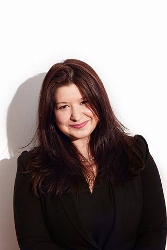
Jenny Kay Dupuis, Ed.D., co-author, I Am Not a Number
When asked why she wrote the book Dupuis replied, “Listening to the stories of my family and community history led me to write I Am Not a Number. My granny shared with me her story at a time when I felt that she wanted to share her truth. I held onto her story for years, waiting for the right time to share it. While I was working in the field of Indigenous education, I found there weren’t any children’s picture books that focused on the Residential School System through the lens of an Indigenous family. So I wanted to reach out to young people through storytelling and literature to ensure they hear true stories about the legacy of forced assimilation; where Indigenous children were taken from their families/home communities and sent to residential schools.
In addition, I also wanted to use literature as a means to encourage educators, families, and community groups to begin to facilitate deep conversations, with young people and each other, about the legislation and policies that have impacted (and still impact) Indigenous peoples. I’m really pleased at the response. So far, educators, community groups, and families have been in contact via social media sharing how they have used the book since its release. For instance, Luke Bramer, a performing arts teacher used the book to inspire his junior level/ freshman high school students to learn about the residential school system and create a puppet theatre performance, using breathing puppets to retell my granny’s story. Other teachers have been using activities like ‘role on the wall’ to introduce the topic of residential schools and begin to discuss topics like genocide, the impacts of colonialism, oppression, assimilation, etc. Families have read the book with their young children, going through a ‘picture walk’ to stimulate interest. Additionally, community organizations, like in Hamilton ON (Canada), are in the midst of hosting (grassroots-led) book launches and readings that also feature youth artwork and other learning inspired by the book I Am Not a Number.”
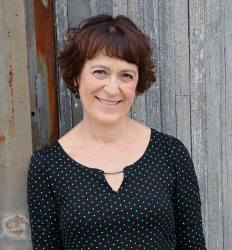
Kathy Kacer, co-author, I Am Not a Number
The Nipissing First Nation lives on the shores of Lake Nipissing in Northern Ontario, Canada. There is a registered band membership of approximately 2,500 persons with about 1,000 residing on reserve. Dupuis is of Anishinaabe and Ojibway ancestry and a member of Nipissing First Nation. The Toronto resident is an educator, researcher, artist, and speaker who works full-time supporting the advancement of Indigenous education.
Kacer is known for her children’s books about the Holocaust, including The Secret of Gabi’s Dresser and The Magician of Auschwitz. A former psychologist, she now travels the globe speaking to children and adults about her books. Newland works in watercolor, ink, and pencils. She finds most of her inspiration to draw outside of her studio, and can sometimes be found sketching fellow customers at a coffee shop. She is the illustrator of The Magician of Auschwitz among other books. All three women live in Toronto.

Click to buy I Am Not a Number
Posted by Elena del Valle on January 19, 2017
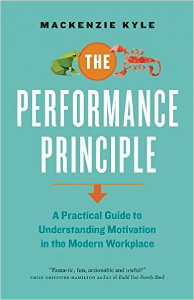
The Performance Principle
Photos: MNP
After Making It Happen, his first non fiction title, was published, Mackenzie Kyle, managing partner for Advisory Services in British Columbia, Canada for MNP, a consulting and accounting firm, he discovered he liked to write and wanted to work on another one. As a result The Performance Principle A Practical Guide to Understanding Motivation in the Modern Workplace (Figure 1 Publishing, $21), was published in 2016. It took four years from his first typed page until it appeared in print.
Written in the form of a novel The Performance Principle features the story of Will Campbell, a newly promoted executive of a firm which has fallen on hard times. Over the course of several tumultuous months, Campbell and his team learn the principles of performance management and the powerful results it can deliver. Kyle’s target audience? Anyone tasked with managing people, from people supervising one other person, to senior managers responsible for large teams. He believes that the ideas in the book are helpful for individuals interested in working more effectively as part of a team; that it can help them to better understand their own motivations, and work more effectively with other teams members.
“My motivation was really two-fold,” Kyle said by email when asked what prompted him to write the second title. “I was looking for an alternative way to communicate a number of ideas around performance management, and I’d had good success with this approach with my previous book (which dealt with project management.). The second reason was fairly personal – I like the writing process, and tackling The Performance Principle was an excuse to do something work-related, that also allowed me to do some creative writing.”
The new book is a sequel to the first book, sharing most of the same characters, who a number of years later are facing some new challenges. The author explained that there is sufficient information about the back story in the new book so it is not necessary to read the first book. At the same time, his approach was similar in both books. The protagonist (Campbell) is the focal point for uncovering the underlying issues, and his sage (his mother-in-law) is the character that brings the ideas about performance management to the team. Kyle wrote the story to help the reader walk through the implementation of the ideas in a (relatively) realistic situation.
When asked why he wrote it in the form of a novel he replied, “I’ve found that wrapping a story around a set of ideas can be a more interesting (some would only go as far as ‘less painful’) way of getting those ideas across. It also provides some context in which people can ‘see’ the ideas in action. I really enjoy the creative writing process, and the challenge of putting the ideas into a story or case study was something I found to be personally interesting (and enjoyable). I keep looking for that job ad for a ‘full time novelist’ but so far haven’t seen it.”
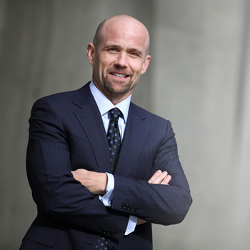
Mackenzie Kyle, author, The Performance Principle
“While I don’t address introverts and extroverts specifically as personality types in the book, I do talk about the reality that different people find different things motivating (or punishing), and how work with that,” the author said when in response to a question about the relevance introvert and extrovert personalities have on the topic. “Recognizing these differences is key to working effectively with a team, and essential for a manager. For example, someone we characterize as an extrovert might find public recognition very rewarding for doing a good job on a particular task; someone we might call an introvert would actually find being singled out in front of the group to be punishing. As a result, they might avoid doing whatever it is that gets them that recognition, even if it’s not the performance we’re looking for.
One caveat though, and that is to avoid pigeonholing people into one category or another. For example, very few are pure extroverts or pure introverts. Instead, they will usually lean toward one side, but have characteristics of the other. This means everyone needs to be treated as an individual when determining what he or she find motivating. Broad generalizations can result in missing the mark, and ultimately less effective performance.”
Kyle has more than 25 years of experience in operations improvement and restructuring, and has provided specific assistance in everything from strategic planning to performance management to managing projects. He has worked in manufacturing, transportation, telecommunications, and the public sector, and internationally in the United States, Australia, New Zealand and Asia.
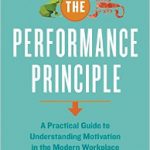
Click to buy The Performance Principle
Comments:
Filed Under: Books
Posted by Elena del Valle on December 16, 2016

Inkspirations for Christmas Joy
Photos: Health Communications, Inc.
Coloring for adults seem to be sweeping the nation and beyond. If the coloring bug bit you and your are looking for new themes the new additions from Health Communications, Inc. in Deerfield, Florida, all 72 pages, 8.5 inches by 11 inches in size, may interest you. Like Christmas? Inkspirations for Christmas Joy Festive Coloring Designs with DIY Gift Tags, Postcards, Wine Tags and More with original art by Kristin van Lieshout, an artist from Lynchburg, Virginia could be worth a look.

Kristin van Lieshout

Inkspirations for women

Inkspirations for a happy heart
Inkspirations for Women Color Your World Happy 30 Inspiring Designs to Nourish Your Heart and Renew Your Spirit by author Marci Shimoff with original art by Judy Clement Wall (see Author, artist team up on coloring book for women) might be just what you seek for an inspirational and affordable holiday gift. Want to cheer yourself up?



Anna Carey, Beth Logan, and Diane Yi
Inkspirations for a Happy Heart Inspiring Coloring Designs to Lift Your Spirit and Feed Your Soul features original art by Diane Yi, who draws her inspiration from nature, beauty, and the sacredness of the human spirit. According to her biography, her work is in private collections worldwide. She lives near Kansas City with her husband and two dogs.

Inkspirations animal kingdom

Inkspirations in the garden
Inkspirations Animal Kingdom Captivating Coloring Designs Celebrating the Majesty of Animals with original art by Anna N. Carey features 32 original designs. Carey has combined her love of animals and her talent as an artist with her passion as an educator. An elementary art specialist she founded Paisley & Hazel Designs, named in honor of her two canine companions.
Like plants? Inkspirations in the Garden Fabulous Floral Coloring Designs Celebrating Life in Full Bloom with original art by Beth Logan may be for you. It includes wildflowers, rose bushes, cottages and gazebos, and a mix of easy designs along with elaborate pages. According to a company representative, the top selling titles from the series are: Fruit of the Spirit, for Women, Recovery, and Animal Kingdom.
Click to buy













 The Power of Breaking Fear
The Power of Breaking Fear







































